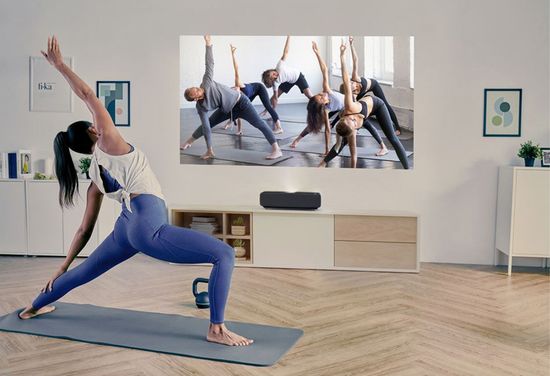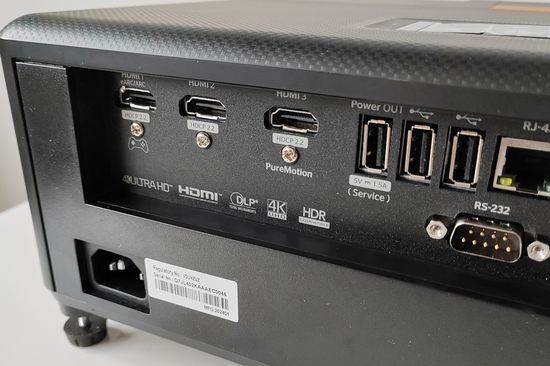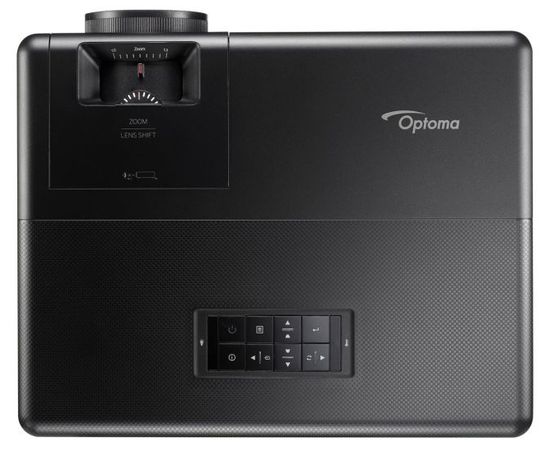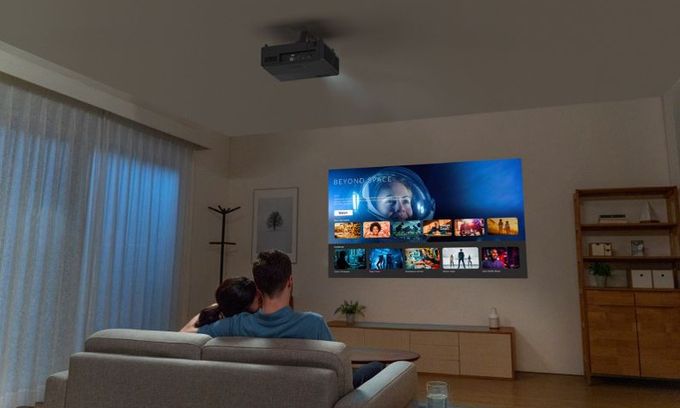The multinational Optoma was founded in 2002 with headquartered in Hemel Hempstead, UK. This brand has been successfully competing in the segments of large format displays, projectors and interactive flat panels for more than 2 decades.
The projectors are one of its most successful areas. The company is rightfully included in the list of innovative industry leaders, offering a wide range, including, for example:
– CinemaX series – P1 (September 2019), P1 Pro (March 2020) and P2 (September 2020).
These ultra short throw (UST) projectors produce huge images from just inches away and are positioned as an alternative to living room TV.

Models use ALPD 3.0-based (Advanced Laser Phosphor Display) light engine. In addition, they provide 4K resolution with a 0.47-inch DLP DMD (Digital Micromirror Device), which supports pixel shift-based XPR (Xpanded Pixel Resolution) technology from Texas Instruments.
In addition, the company introduced Optoma L1 (2023, ~ € 2,000), which became the first UST model with a 4LED light engine;
– new Optoma ML1080 / ML1080ST, HZ40HDR, GT2000HDR and GT2100HDR Full HD 1080p laser models;
– UHZ series of 4K mid-focal laser Home Theater projectors.
Today it includes:
– Optoma UHZ50 ~ $ 2,800, November 2021, 3,000 ANSI Lumens (ANSI IT7.228 standard);
– -‘- UHZ45 ~ $ 2,500, July 2022, 3,800 ANSI Lumens;
– -‘- UHZ55 ~ $ 2,500 (£ 2,000 RRP and £ 1,700 in UK), February 2024, 3,000 ANSI Lumens.
The models offer almost identical specs and functionality:
– 4K resolution;
– HDR and HLG support;
– Laser Phosphor light engine;
– Full HD 3D support;
– 2,500,000:1 dynamic contrast ratio (UHZ45 – 2,000,000:1);
– geometric correction, including four corner adjustment, ±30° H/V keystone correction, auto keystone and 3×3 warp;
– 2x 10W internal speakers.
UHZ specs
All models use optics with similar specs:
– manual focus + 1.3x manual zoom in UHZ50/55 and 1.1x in UHZ45;
– 35″ – 300″ Image Size from 1.2 m ( ~ 4 ft) and more Throw Distance at (1.2:1 – 1.6:1) Throw Ratio.
To be fair, increasing the projection size beyond 120″-150″ usually comes with a decrease in image clarity. Additionally, colors of an oversized image will fade and fade even at 3,000 ANSI Lumens brightness, requiring more careful room darkening. But formally, the optics can actually form an image up to 300″ diagonally, which manufacturers, of course, use for marketing purposes.
Like other UHZ models, UHZ55 can well be classified as a gaming one due to its very low input lag. According to the specs, it’s only 4.2ms for 1080p@240Hz, 8.6ms for 1080p@120Hz and 16.7ms for 4K@60Hz in Enhanced Gaming mode. Measurements show 5, 9 and 18ms, respectively.
Traditionally, this mode blocks the digital zoom, aspect ratio, image shift, and geometric correction features. In addition, Enhanced Gaming mode only works via HDMI 1 input.

Other HDMI ports are also specialized. For example, Pure Motion (motion interpolation) is only available on HDMI 3, HLG HDR playback can use HDMI 1 or 2. Moreover, each HDMI input can have the unique picture mode settings.
Projector has a customized Android smart platform. But using a some popular streaming device, for example, Apple TV or Fire TV, will be more convenient for many.
The sound quality of 10W stereo speakers is unlikely to satisfy music lovers. But the projector has eARC/ARC HDMI port and WiSA HT certification. Accordingly, using powered WiSA speakers system, the user can set a low-latency, high resolution wireless 5.1ch audio system using an inexpensive WiSA transmitter via eARC/ARC HDMI port.
Color Modes
The UHZ55 has eight SDR picture modes, two 3D modes and two HDR modes. Two SDR modes are designed for ISF Day / ISF Night settings and require unlocking via the ISF code. The list of other SDR modes includes Cinema, HDR SIM, Game, Reference, Bright, and User. HDR offers only HDR and User. Finally, HLG also uses a separate mode.
All picture modes have biass towards blue or green due to the imperfect default color temp. But selecting a Standard color temp partially reduces the problem.
Overall, User and Reference provide better color accuracy for SDR ‘out of the box’. But Reference uses single non-adjustable DLP BrillantColor setting with limited brightness.
However, the ‘image realism’ always depends significantly on perception. В любом случае, controls from top significantly simplify calibration by offering Gain and Bias controls (white balance), and a full CMS (Color Management System) to adjust colors and shades.

Brightness at Constant Power 100 ranges from 900 ANSI Lumens in Reference mode to 2500 ANSI Lumens in Bright (HDR Sim, Game and User ~ 2100 ANSI Lumens).
The color gamut measurement demonstrates a full coverage of Rec.709, DCI-P3 coverage ~ 85% and just over 60% for BT.2020. Of course, using a filter will expand the color gamut, but will reduce the light output. In principle, the measured range is typical for this class, especially considering the lack of a filter.
UHZ55 comes with 2.4GHz/5GHz Wi-Fi dongle, which connects via USB port. Model supports Smart Home (control via Alexa), Creative Cast (screen mirroring), Optoma Marketplace (Hulu, Prime Video, Netflix, etc apps).
The 3D mode syncs with simple 3D DLP-Link glasses.
Conclusion
Pros
– high 3,000 ANSI Lumens brightness and 83% DCI-P3 color gamut with an ALPD 3.0-based solid-state laser light engine;
– 4K resolution with 0.47″ DLP DMD with support for pixel shift-based XPR technology;
– Optoma’s DuraCore laser light source with advanced laser diode cooling and an innovative dust resistant design;
– very low input lag in Enhanced Gaming Mode – 16.7ms for 4K@60Hz and 4ms for 1080p@240Hz;
– 3D support;
– vertical +10% lens shift.
Cons
– imperfect color accuracy even after calibration;
– no lens shift;
– low native contrast;
– no Google Play Store;
– too ‘flat’ on-board sound.
In fact, the UHZ55 has become one of the best all-around mid-focal Home Theater laser 4K models with superb gaming capabilities due to its ultra-low input lag.
It’s more feature-rich and cheaper compared to the Optoma UHZ50 (November 2021, ~$ 2,500 vs $ 2,800). Comparison with the superb Optoma UHZ45 (July 2022) is less clear, but also in favor of the new product. At the same price, the UHZ55 additionally offers vertical +10% lens shift, an increased dynamic contrast ratio of up to 2,500,000:1, and some advanced features including Optoma’s Pure Motion frame interpolation, Streaming Apps and Google Assistant. But the UHZ45 is significantly brighter (3,800 vs 3,000 ANSI Lumens), which reduces ambient light requirements.
To be fair, the $ 2,500 launch price seems high. But after its traditional correction, the price-quality ratio may well provide this model with cloudless marketing prospects and a place among bestsellers.
This video demonstrates the new Optoma UHZ55 smart 4K laser Home Theater projector.
